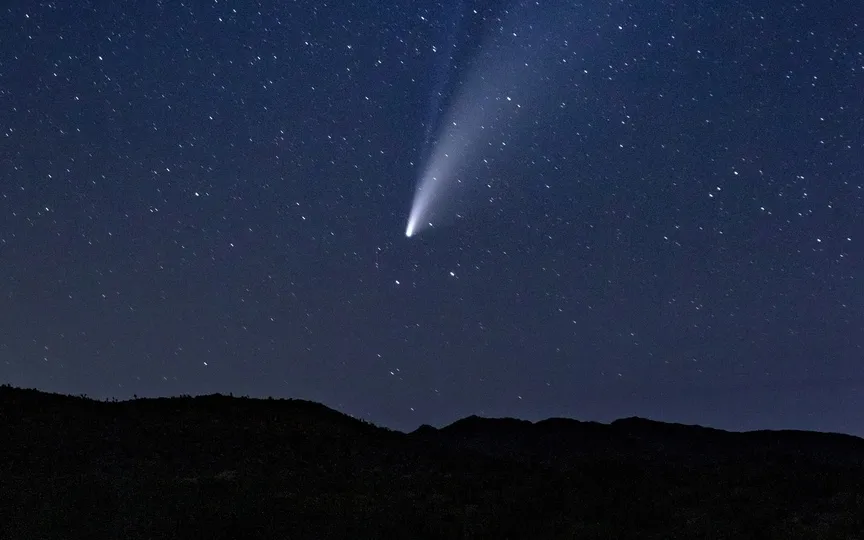When to Watch: Comet Tsuchinshan-ATLAS to Make its Closest Approach to Earth
Every day, Earth is passed by asteroids and some small ones even collide with it. However, comets are a rare occurrence and when they do appear, it is an exciting time for both astronomers and the general public. This excitement is currently building as Comet C/2023 A3, also known as Tsuchinshan-ATLAS, is expected to pass by Earth in 2024. According to Business Insider, astronomers predict that this comet could be 100 times brighter than the comet ZTF, making it potentially the most spectacular sight of the year. Despite the anticipation, the comet is still over a year away.
“Almost immediately it became a comet in the comet community because the predictions put it all over the place in terms of how bright it could get,” says Ariel Graykowski, a planetary astronomer at the SETI Institute. Intriguingly, he also believes it could be even brighter than Venus itself. Right now, the comet is millions of kilometers away.
About Comet C/2023 A3
According to Business Insider, comet C/2023 A3 (Tsuchinshan-ATLAS) was first discovered by astronomers at the Purple Mountain Observatory in China and the asteroid Terrestrial Impact Last Alert System, ATLAS.
At first, the comet was thought to be an asteroid, but it was later declared a comet. Astronomers are excited about the comet because it was spotted when it was millions of kilometers from the Sun and was so clear.
Astronomers believe that the comet will pass the Earth in September 2024.
Is the prediction correct?
According to Scientific American, predicting a celestial body can be an arduous exercise. For example, earlier in 1973, Comet Kohoutek was discovered very early, like the Tsuchinshan-ATLAS. Astronomers hailed it and called it “the comet of the century,” but Comet Kohoutek was only as visible as a night star and vanished within minutes.
“In almost every case, it’s not going to end the way you predicted… We won’t know until we get there,” says Quanzhi Ye, a planetary astronomer at the University of Maryland.
According to astronomers, the comet may disintegrate, lose its luster, or even become brighter than expected.
So get ready for this comet because it could be a space miracle or a space thing, just mark the date in your calendar because it will appear in late September or early October next year.




